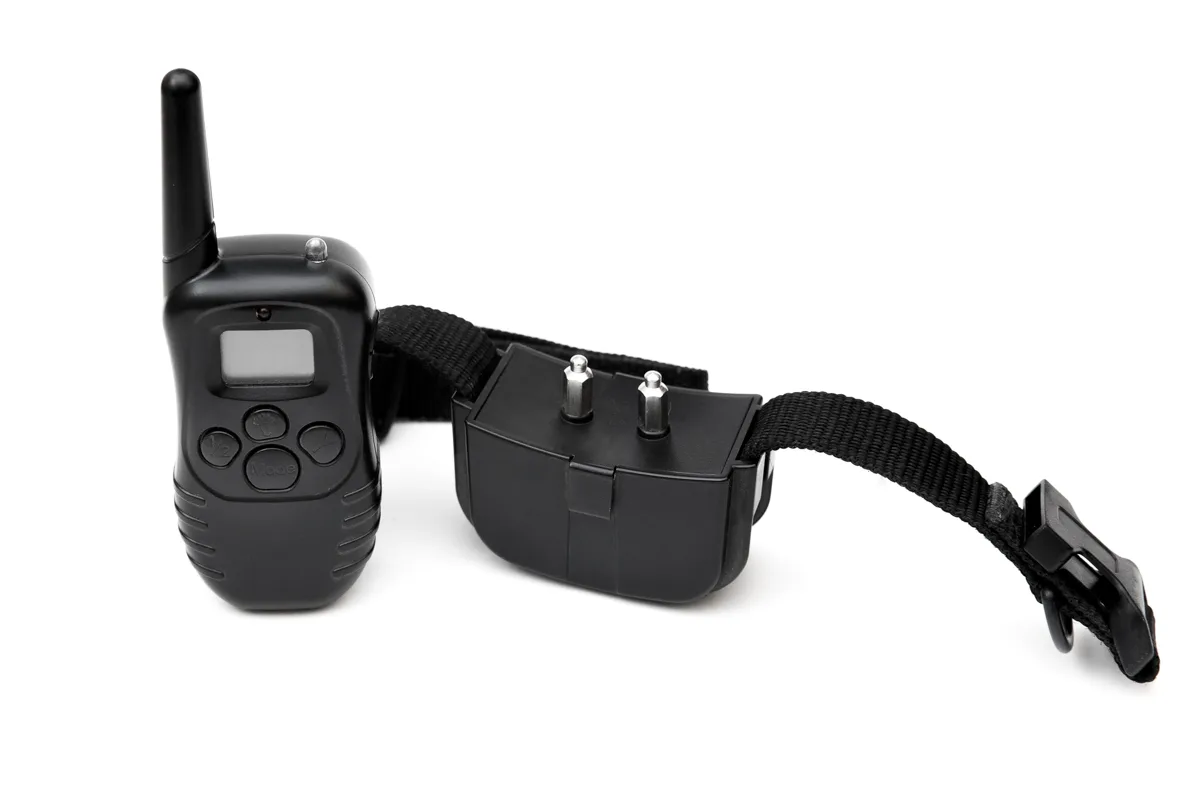Electronic collars, commonly known as e-collars, can be an excellent training tool for dogs when used responsibly and with proper guidance. E-collars can be an effective means of communication during the training process for dogs.
We’ll delve into the world of e-collar training, discussing its benefits, the importance of proper usage, and the step-by-step process to train your dog using an e-collar.

This post may contain affiliate link(s). As an Amazon Associate, I earn from qualifying purchases.
What are e collars?
An e-collar for dogs is an electric training aid consisting of a wireless remote and a wireless receiver that the dog wears on a collar close to their neck.
The collars utilize a radio signal to deliver an adjustable stimulus sent via remote control (transmitter) to a receiver collar worn on the dog’s neck, either to discourage negative behavior or to encourage compliance with commands.
The purpose of an e-collar is to effectively communicate and train your dog that they have the ability to remove an unwanted or annoying stimulus through their actions.
Have you ever forgotten to put your seatbelt on and heard the annoying beep your car makes as you drive away? Even if you really didn’t want to wear your seatbelt the annoying beep eventually overrides that desire without causing pain and you find yourself putting the seatbelt on. There is no pain involved in this situation. E-collars, when used properly, work along the same principal.
There are many e-collars available on the market. Some high quality examples include:

What are the benefits of e collar training for dogs?
There are many benefits of using an e-collar such as clear and timely feedback to the dog during training.
An e-collar allows you to deliver a clear and concise stimulus to the dog that can be exactly the same every time or adjusted as needed. This stimulus is able to be provided to the dog at the exact moment needed by simply pressing a button.
E-collars allow you to provide adjustable feedback and train your dog off leash at distances further than any other physical form of communication, such as a leash, would provide.
How do you train your dog with an e collar?
The first step to training your dog with an e-collar is to properly size the collar so the prongs of the receiver are snug against the skin of your dog’s neck.
In order for your dog to feel the sensation being transmitted, both contact points must be in good connection with the skin. The skin acts as a conductor between the points.
Skin contact allows the electricity to travel from one point to the other, thus allowing your dog to feel the sensation in the space between those two contacts. The collar should not be so tight that the prongs irritate and wear the skin raw.
Once you have a proper fit, you’re ready to introduce the dog to the e-collar and find a working level or titration.
You will want to have your dog wear the e-collar for a couple of days before use so the dog does not immediately pair the stimulus to the collar.

Begin by finding the working level
Slowly apply and increase stimulus at the lowest setting until you observe a slight change in your dog’s mannerisms. These changes could be subtle things like their ears perking up or closing their mouth.
The working level will vary due to many factors including the size of the dog, temperament and amount of skin/fur. For example, a Dutch Shepherd vs. Belgian Malinois might require a higher working level than a small breed like a Yorkie.
Once the beginning working level has been established, introduce the e-collar by applying stimulus to the dog and giving a command that the dog knows such as sit or down.
As soon as the dog performs the task, stop the stimulus. Repeat this process and teach the dog that they control shutting off the stimulus by performing the action requested by the handler.
Using the e collar off leash
After this initial training phase you are ready to use the e-collar off or on leash if your dog is being disobedient to known commands.
The titration level may change depending on the environmental distractions. For example, if your dog is inside with no distractions your working level should be sufficient. However, if you are outside and a rabbit runs off in the distance putting your dog in a heightened sense of drive you may find yourself needing to increase the level of stimulus.
It is a good idea to use the combination of e-collar with reward based techniques for strengthening desired behaviors as well as balancing motivation.
A study by the American Veterinary Society of Animal Behavior showed positive reinforcement to be more effective at training dogs than e-collar.
It’s important to note that an e-collar should not be used to teach a dog a command they do not know. It should be used to apply stimulus or light pressure to motivate the dog to perform a known command.
Ethically, using an e collar for unknown commands is not fair to the dog. Imagine someone tapping your shoulder repeatedly telling you to do something you have no idea how to do.
With this in mind, the e collar is great for training a dog on commands they already know when off-leash or in an environment they might otherwise be distracted in. You wouldn’t, however, want to train a dog how to walk on a leash for the first time using the e collar.
In some cases, e-collars are used to train a dog to be aversive of certain objects or reptiles such as snakes. The dog should be conditioned to the e-collar and such training should be done by a reputable trainer.
Before using an e-collar you should have a good relationship and obedience foundation in place with your dog.

Is e collar training for your dog?
E-collar training can be an effective tool for improving obedience especially off leash.
By understanding the proper techniques, combining it with positive reinforcement, and prioritizing your dog’s well-being, you can greatly increase communication between you and your furry companion.
Remember, responsible and informed training practices are key to successful e-collar training.

